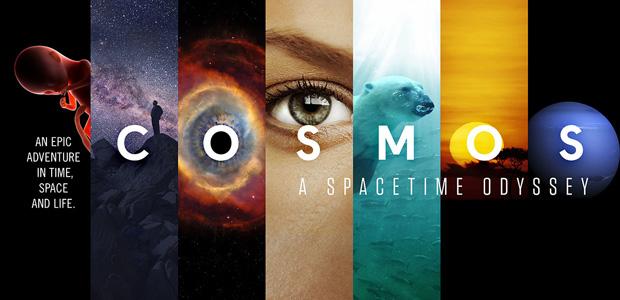Science comes alive in “Cosmos: A Spacetime Odyssey,” as astrophysicist Neil deGrasse Tyson delves into the nature of the universe and its connection to mankind, dating it back to the Big Bang.
The documentary is an adaptation of the original iconic classic, “Cosmos: A Personal Voyage,” hosted by renowned scientist and author Carl Sagan.
According to Tyson, “Cosmos” bridges the frontier line between geology, biology, astrophysics and physics. In an interview with Space.com Tyson said, “If you move fluently across those boundaries, you realize that science is everywhere. When you realize that, and then you come to embrace it, your interaction with the storytelling is something completely different.”
“Cosmos: A Spacetime Odyssey” is created and produced by Sagan’s widow, Ann Druyan, who was also the creator of the original series. Comic giant Seth MacFarlane (creator of “Family Guy”) made the show possible by delivering it to FOX through his financial support as an executive producer.
The director of photography, Bill Pope, was also the director of photography for the 1999 blockbuster film, “The Matrix.”
MacFarlane often watched “Cosmos” as a child. “It was presented in such a way that placed it in a very different category from other science documentaries that tended to be a little on the dry side,” MacFarlane told FOX.
The original “Cosmos” became a pivotal moment in science documentaries when it ran in 1980. It has been broadcast in 60 countries, attracting audiences of more than 500 million. The show received a lot of attention and acclaim, winning both an Emmy and Peabody award.
Tyson looked up to Sagan. As an aspiring astrophysicist in 1975, young Tyson had the opportunity to meet the already famous Sagan.
Sagan was the founding member for the Committee of Scientific Investigation of the Claims of the Paranormal and the director of the Laboratory for Planetary Studies at Cornell University. NASA awarded him with two medals for Exceptional Scientific Achievement and Distinguished Public Service. He was given the Public Welfare Award by the National Academy of Sciences in 1994.
Sagan died at the age of 62 from bone marrow disease.
Like Sagan, Tyson is also an active contributor to scientific studies along with a list of achievements and accolades. He served as the host for PBS science documentary “Nova ScienceNow,” from 2006 to 2011. From 1995 to 2005, Tyson served as the monthly essayist for “Natural History” magazine. He authored 10 books including two memoirs. His book, “Death by a Black Hole and Other Cosmic Quandaries,” was a New York Times bestseller. He is also the director of the Hayden Planetarium in New York City.
Tyson and famed scientist William Samford “Bill” Nye are best friends. “We text and email three or four times a week about one [scientific] topic or another,” said Tyson (Space.com).
“A Spacetime Odyssey” is one step up from its predecessor because of the cutting-edge computer generated imagery, engrossing soundscapes, and stunning cinematic artistry that connect to audiences on a larger scale.
The iconic “Ship of the Imagination,” a spaceship in which Sagan and Tyson — with the help of digital artistry — journey through time and space, is revamped in the new series.
The goal of the show is not specifically intended to reach out to science lovers, but rather to a wide range of audiences. Since “A Personal Voyage,” the “Cosmos” legacy has made its way into popular culture.
GCC Geography professor Marla Conti has never missed an episode of either series. “This is very similar. Back then they didn’t have the techniques to do all that animation, so [Tyson] makes it more alive.
“[Tyson] is so sincere about it and you kind of want to listen to him,” Conti said, “I think some scientists act like they’re these cold people that don’t have any emotion in it and it sounds boring and [Tyson] takes the boringness out of it. I love the way he is able to connect one idea to a completely different idea and show how they work.”
Tyson’s verbal articulation and utmost “cool factor” effortlessly sparks scientific appraisal and makes the subject accessible to viewers, especially young people. He educates, entertains, and immerses the viewer all at the same time.
“The Lost Worlds of Planet Earth,” Episode 9, shows that the reason behind human existence is far greater than we think.
“We’re here because when the dinosaurs went extinct, and that one little mammal was able to survive and led to the age of mammals,” Conti said. This mammal was the cause of the human race.
Every episode presents a different topic and within each episode the grandeur of the cosmos and life origins are presented in a new and enticing way.
“It’s a good way for people to get acquainted with the big principles in modern science, because [Tyson] breaks it down and makes it pretty simple,” Conti said.
The final two episodes of the 13-part series will air on FOX on Sunday and June 8 at 9 p.m, followed by a recap the next day on The National Geographic Channel.


